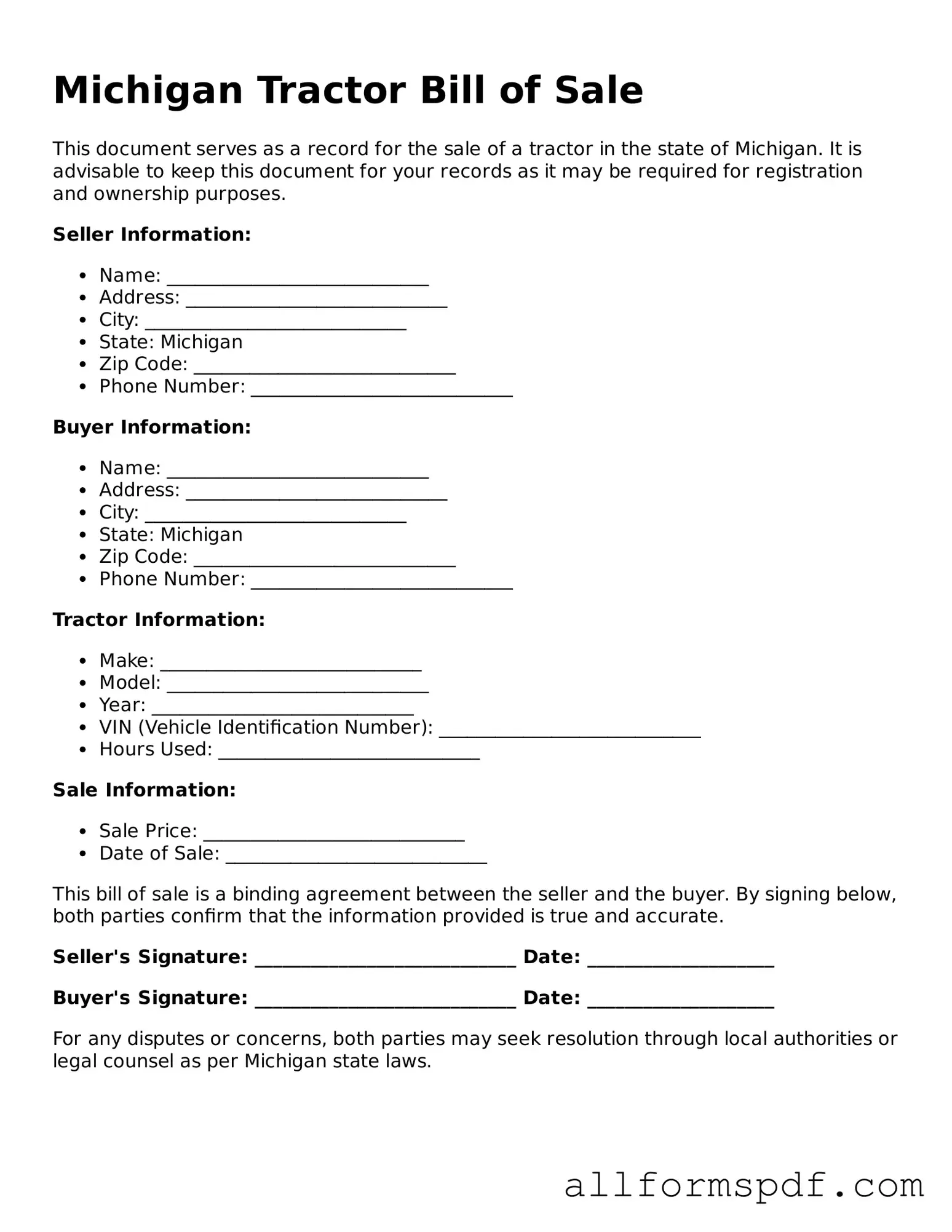Filling out the Michigan Tractor Bill of Sale form can be a straightforward process, but mistakes can lead to complications. One common error is failing to provide accurate information about the tractor. This includes the make, model, year, and Vehicle Identification Number (VIN). Incomplete or incorrect details can create issues during registration.
Another frequent mistake is neglecting to include the purchase price. The form requires the seller to state the amount for which the tractor is being sold. Omitting this information can raise questions about the transaction and may complicate tax assessments.
Many individuals forget to sign the form. Both the seller and the buyer must provide their signatures to validate the transaction. Without these signatures, the document may be considered incomplete and unenforceable.
Some people also overlook the date of the sale. This date is important for record-keeping and can impact the buyer's ability to register the tractor. Ensuring that the date is clearly noted helps avoid future disputes.
Providing incorrect contact information is another common error. Buyers and sellers should include their full names, addresses, and phone numbers. This information is crucial for any follow-up communications or issues that may arise after the sale.
Many individuals fail to check for any liens on the tractor before completing the sale. A lien indicates that there are outstanding debts associated with the tractor. Buyers should ensure that the seller has clear ownership to avoid potential legal problems.
Some people do not make copies of the completed Bill of Sale. Keeping a copy for personal records is essential. This document serves as proof of the transaction and can be helpful in case of disputes or questions in the future.
Another mistake is not providing a clear description of the tractor's condition. Buyers appreciate knowing whether the tractor is in working order or if it has any issues. Including this information can help set realistic expectations for both parties.
Some individuals forget to include any warranties or guarantees associated with the sale. If there are any verbal agreements about the tractor's condition or future repairs, these should be documented on the Bill of Sale. This protects both the buyer and the seller.
Lastly, people often rush through the process without reviewing the entire form for accuracy. Taking the time to double-check each section can prevent many of these common mistakes. A careful review ensures that all necessary information is included and correct.
